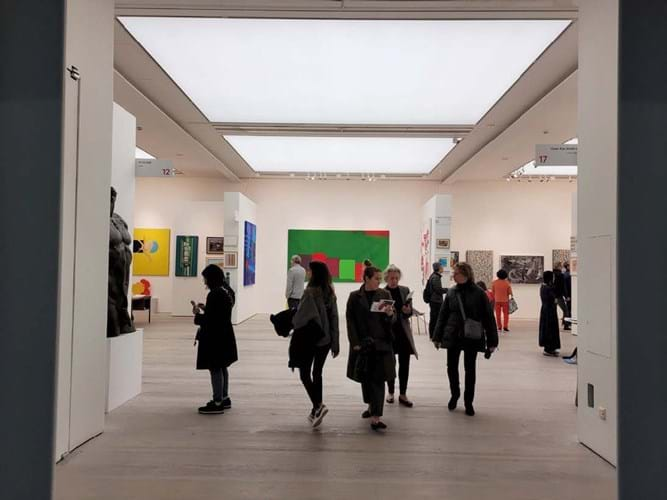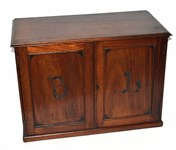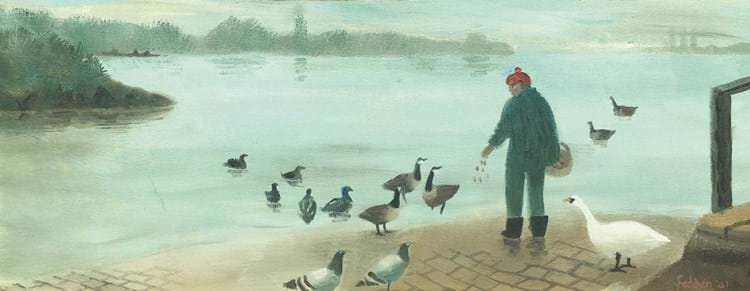
At the recent British Art Fair, London firm Panter & Hall found a new buyer for a Mary Fedden picture - 20 years after purchasing it from the artist. The gallery had Chiswick Mall reframed before exhibiting it at the Chelsea show where it was ticketed at £19,500 and snapped up by new client.
Fedden (1915-2012) was on the lips of many dealers at the fair, which ran from September 29-October 2 at the Saatchi Gallery, its first in-person staging since 2019.
The event had its share of reinventions and challenges this year with new ownership and grim economic conditions. However, with many faithful clients turning up, sales were strong particularly in the fair’s heartland of familiar Modern names.
Panter & Hall’s Matthew Hall told ATG: “Sales were quite brisk at the event and there were a few after sales, which we don’t usually have, most at the £3000-5000 range. Lots were good, solid RA artists from the 1930s-50s.”
Perennial favourite
The Fedden was at the top end of the gallery’s offerings. A prolific artist and perennial favourite with Mod Brit buyers, her work was widely offered at the fair.
The Bristol-born artist, wife of fellow Mod Brit painter Julian Trevelyan, is relatively accessible in terms of price point, style and subject matter. Particularly popular are her still-lifes, landscapes populated with animals and depictions of cats, but there is plenty to choose from in her output.
A Fedden self-portrait was the centrepiece of long-term exhibitor Kaye Michie’s stand. Michie dubbed this BAF “a lovely fair” with lots of good sales including that work.
For Jamie Anderson of first-time exhibitor Portland Gallery, the availability of Feddens posed a specific challenge. Ahead of staging a major show on the artist at its St James’s premises (The Painter’s Eye, November 10-December 2), the gallery brought along a major midfive figure example - another stand centrepiece.
“The fair started slowly in terms of sales,” Anderson said on the second day. “If you want a Fedden you can by Frances Allitt go elsewhere in the event and get one for £5000. We’re at a relatively high price point.” (Not to worry, though - the gallery concluded the fair with sales of a William Turnbull sculpture and a drawing by Scottish Colourist JD Fergusson.)

Offered for around £2000, this oil on canvas by John Bratby sold from the stand of Freya Mitton at the British Art Fair.
Twentieth-century specialist Freya Mitton also sold works by Fedden, but also parted with works by John Bratby, John Copnall, Ken Howard and Henry Inlander among others, with some of the highlights going at or below the four-figure mark. Works in the second camp included a Breon O’Casey (1928-2011) Christmas card, which sold to an artist.
Scottish artists
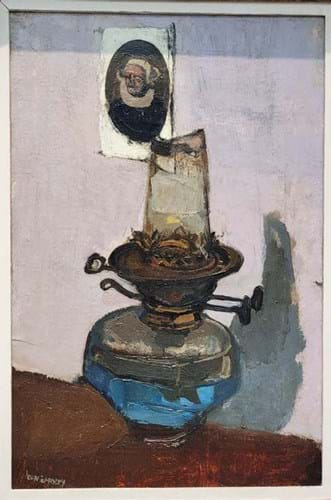
Patrick Bourne & Co sold The Oil Lamp by Joan Eardley at the British Art Fair for a price just under £50,000.
Stand-out sales by major names were to be found across the board.
Patrick Bourne & Co kicked off proceedings with the sale of two works by female Scottish artists. One was by Anne Redpath (1895-1965), whom Bourne specialises in, and the other by Joan Eardley (1921-63), which sold to a Scottish collector for a price just under £50,000. Their sales started at around £6000.
Long-time participant Jonathan Clark sold works ranging from £20,000-300,000 with a William Scott near the top end of the range.
Fellow stalwart The Nine British Art found homes for works by Roger Hilton and Wilhelmina Barns-Graham at prices from £3500-100,000.
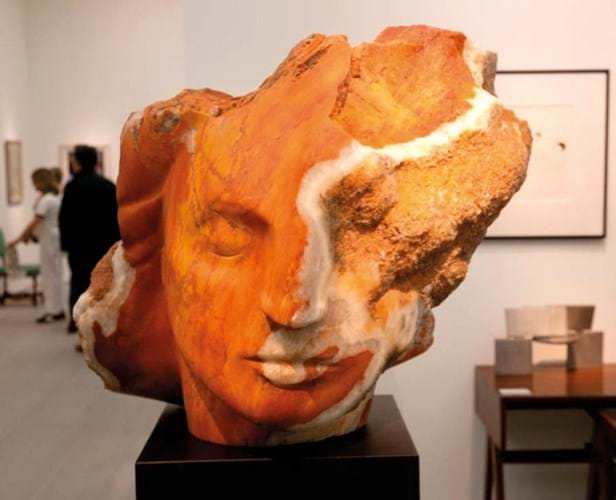
Emily Young, Earth Dreamer II on the stand of Willoughby Gerrish where it was ticketed at £280,000 at the British Art Fair (photo by Piers Alladyce).
First-time exhibitor Willoughby Gerrish sold a large sculpture, Earth Dreamer II by Contemporary sculptor Emily Young, which was priced at £280,000. This was joined by sales of a William Staite Murray sculpture to the Hepworth Wakefield Museum, a frieze by Eduardo Paolozzi and a work by Anthony Caro.
Challenging times
New BAF owner Will Ramsay of Ramsay Fairs told ATG: “It wasn’t flash-bang in terms of sales, but we were right in the middle of a budget that had many people throwing their arms up in the air.”
Earlier this year he added BAF to his large portfolio of mainly Contemporary events, such as the Affordable Art Fair, Pulse and Volta.
Among the changes he introduced were a new section focusing on Contemporary artists and - fittingly for a Scottish owner - a special exhibition on William Johnstone and work from the Royal Scottish Academy. A third special exhibition featured works by the Ingram Collection, which was reportedly seen shopping at the fair too.
Overall, Ramsay was pleased with the results and said there were more changes to come. “We can’t stagnate. We will continue to try to evolve and improve the fair from a visitor perspective.”
Dealers do not always embrace change. The reception of the more Contemporary bent did not receive universal acclaim from exhibitors.
But as founder and director Gay Hutson pointed out, recent works have been part of the fair’s make-up since its early days. She added that the Contemporary offerings were not the “decorative” Contemporary art that sometimes circulates on the market.
There is a demonstrable loyalty to the event. Despite changes and some time away, visitors were not put off, and numbers were said to be up on previous years.
Tania Sutton of Osborne Samuel said: “There were clients there that I’ve wanted to talk to for years and at one point all four of us working on the stand were talking to familiar clients. I really felt the fair got it right.”


